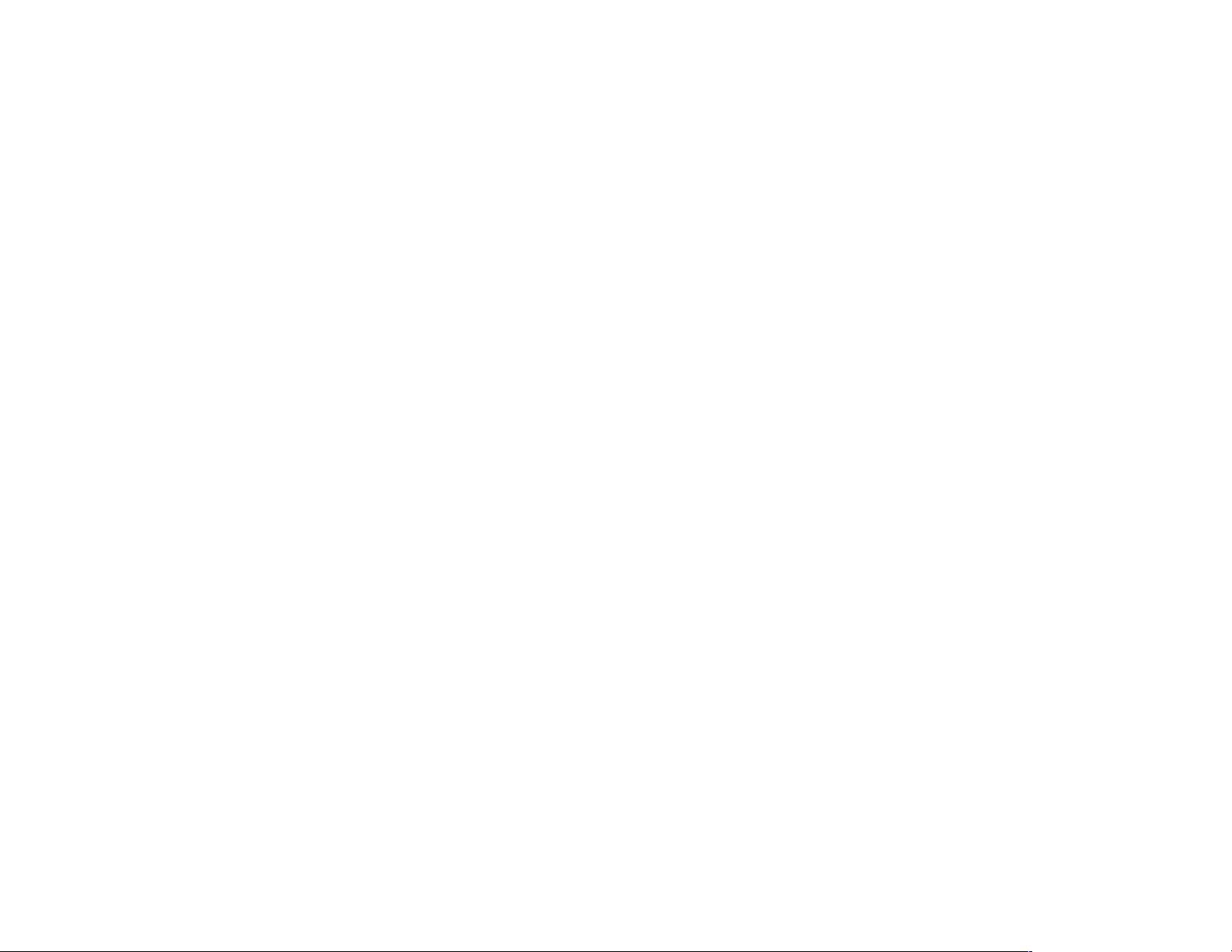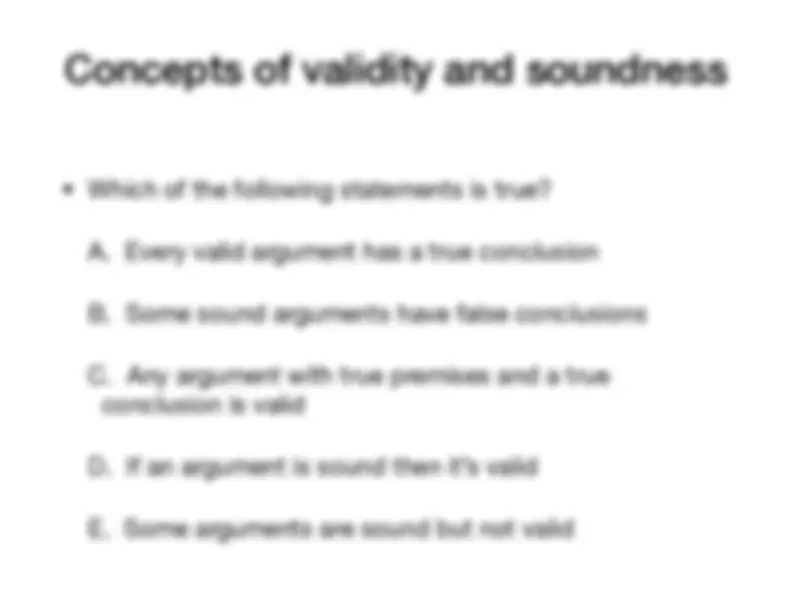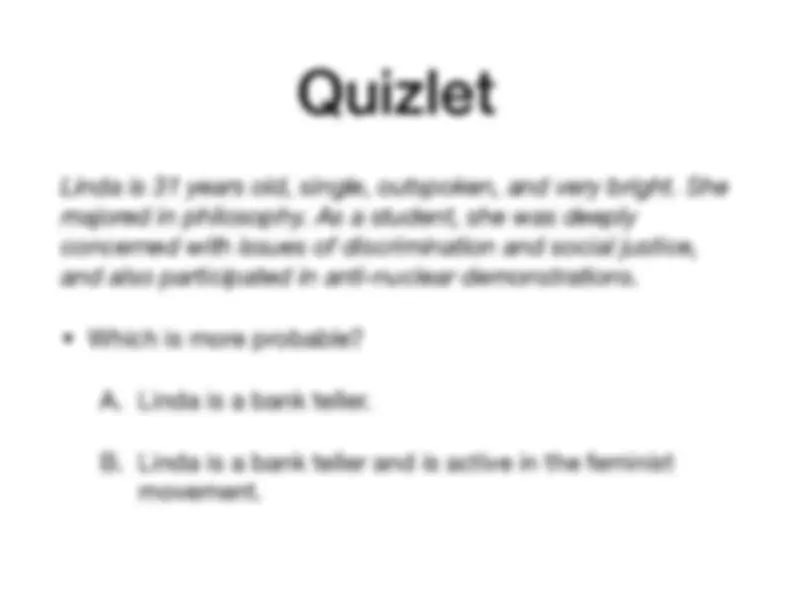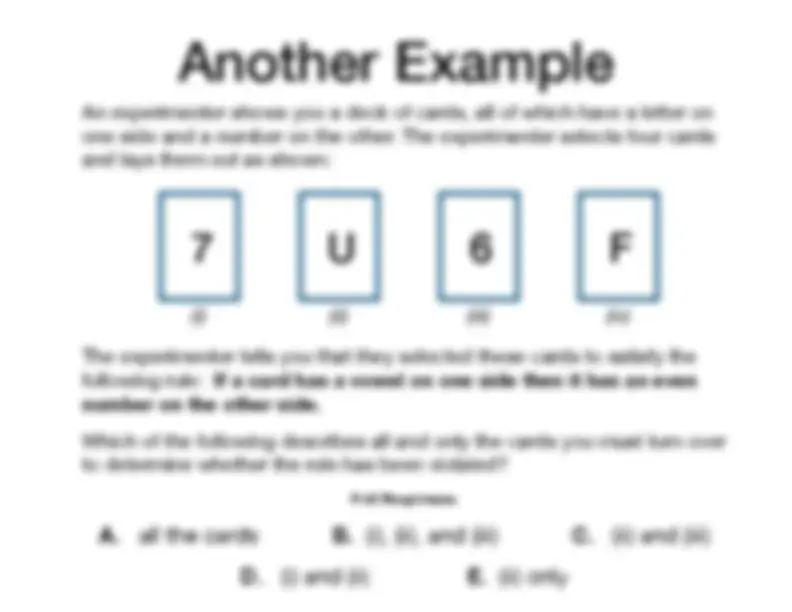





Study with the several resources on Docsity

Earn points by helping other students or get them with a premium plan


Prepare for your exams
Study with the several resources on Docsity

Earn points to download
Earn points by helping other students or get them with a premium plan
Community
Ask the community for help and clear up your study doubts
Discover the best universities in your country according to Docsity users
Free resources
Download our free guides on studying techniques, anxiety management strategies, and thesis advice from Docsity tutors
A series of exercises and questions designed to test understanding of logic and critical thinking concepts. It includes iclicker quiz questions, examples of logical fallacies, and a classic card-based reasoning problem. The exercises are suitable for students studying logic, philosophy, or critical thinking, and can be used to reinforce key concepts and develop analytical skills.
Typology: Exercises
1 / 5

This page cannot be seen from the preview
Don't miss anything!




What category of sufferers did you decide provides the most compelling examples of pointless suffering? (A) Adult humans (B) Human children / infants (C) Nonhuman animals (D) Other
Linda is 31 years old, single, outspoken, and very bright. She majored in philosophy. As a student, she was deeply concerned with issues of discrimination and social justice, and also participated in anti-nuclear demonstrations.
A. Linda is a bank teller. B. Linda is a bank teller and is active in the feminist movement.
Another Example An experimenter shows you a deck of cards, all of which have a letter on one side and a number on the other. The experimenter selects four cards and lays them out as shown: The experimenter tells you that they selected these cards to satisfy the following rule: If a card has a vowel on one side then it has an even number on the other side. Which of the following describes all and only the cards you must turn over to determine whether the rule has been violated? Poll Responses A. all the cards B. (i), (ii), and (iii) C. (ii) and (iii) D. (i) and (ii) E. (ii) only ! 7 !U! 6 !F (i) (ii) (iii) (iv)